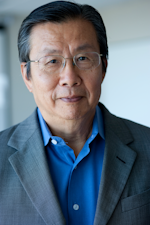Business Forum: For China, investing in photonics R&D is a very high priority

I talked to Professor Qihuang Gong from Peking University after he gave an informative presentation at the 27th annual Lasers & Photonics Marketplace Seminar, which was held in San Francisco during SPIE Photonics West 2015. Given our limited time together, we chatted instead of conducting a formal interview, but I believe his position and experience provide valuable input to help us understand the global nature of our photonics community.
Gong is an endowed professor of physics at Peking University (Beijing, China), where he is the founding director of the Institute of Modern Optics and chief scientist of the National 973 Project (also known as National Basic Research Program). He is also general secretary and VP of the Chinese Optical Society, and a Fellow of the OSA. His research group has a staff of 200, with seven full professors, six associate professors, and four talent professors (out of 100 up-and-comers nationwide), and an annual budget of 20M RMB (US$3.2M). His current research interests are in ultrafast optics and spectroscopy, mesoscopic physics (relating to condensed matter physics), optical devices, nonlinear optics, and optical information processing and communications.
Gong first put into perspective that 200 million out of 1.35 billion Chinese live in dire poverty. Then he provided a snapshot of the development of optics technology in China: R&D planning begins at the State Council, below which are the ministries including the Chinese Academy of Science. Optics capability is guided by the National Program for Science and Technology Development.
Interest in optics in China began in 1950, and the first optical research institute, Chang Chun Institute of Optics, was founded in 1952. Its early efforts were concentrated mainly on building competence and infrastructure in optics including talent training.
Today, optics gets plenty of attention from the top. There are more than 200 optics-related higher education institutions (HEI), and 20% of the graduates from the HEI are in optics. Total funding for optics and laser science has been increasing 20% per year to 20B RMB ($US3.2B), with $10 billion RMB allocated to the 973 program. Furthermore, State leadership has promised that this rate of increase can be expected to continue for the next five years. Currently there are 329,000 graduate and 1,154,000 undergraduate students enrolled in optics-related fields, graduating 86,000 and 216,400 students last year, respectively. What is being worked on in R&D is not dissimilar from what is being worked on in the US.
Industrialization is also emphasized with participation at the provincial and municipal levels. Established in 2000, Wuhan Optical Valley is the first optoelectronic industrial park. It is home to both domestic and foreign companies as well as joint-venture companies. Today, there are similar industrial parks in the provinces of Guandong, Jiangsu, and Zhejian, and also in the cities of Shanghai, Beijing, and Changchun.
The development of the optoelectronics industry began in early 1990. In 2011, there were over 5000 enterprises in optics, with 400B RMB in revenue and an annual growth rate of over 20%. Products include solid-state lighting, optical materials and components, optical communication, photovoltaics, laser processing, and general applications of lasers.
During the same seminar where Gong talked, Strategies Unlimited reported that ~70% of lasers for marking are now produced in China.
Along with internal R&D, China is also implementing an international cooperation program, which includes recruiting foreign experts, launching international journals, fostering international cooperation and hosting conferences. There are student chapters of OSA at Peking University, and the OSA topical meetings, for example, NanoPhotonics 2012 and Frontiers in Optical Coating 2014, were well attended.
Chinese leaders see the importance of photonics and are making a massive R&D investment. Given the connectivity, mobility, and speed of communication, we expect equalization of capability in due time. None of us can be complacent; we have to use ingenuity to achieve excellence and to create singularities like “Google” and “Apple” in photonics.

Milton Chang
MILTON CHANG of Incubic Management was president of Newport and New Focus. He is currently director of mBio Diagnostics and Aurrion; a trustee of Caltech; a member of the SEC Advisory Committee on Small and Emerging Companies; and serves on advisory boards and mentors entrepreneurs. Chang is a Fellow of IEEE, OSA, and LIA. Direct your business, management, and career questions to him at [email protected], and check out his book Toward Entrepreneurship at www.miltonchang.com.